Abstract
A method for the instrasplenic cloning of lymph node cells, based on the injection into X-irradiated recipients of cells from phytohaemagglutinin treated donors was developed. Clones were tested for their capacity to form anti-Shigella antibodies, and to produce a graft versus host immune response. It was found that each of the randomly chosen clones produced antibodies to Shigella. When immunized `cloned' cell populations were injected into secondary recipients, and the latter were again immunized with Shigella, an increased response was obtained. Clones produced by bone marrow cells in spleens of X-irradiated animals, similarly tested for the immunological competence did not produce antibodies to Shigella. Cells of lymphoid clones of parental strain origin produced a graft versus host response in newborn F1 hybrids. Bone marrow derived clones did not. Thus, each cloned cell population appears to be a priori pluripotential with respect to antibody formation. The immunological findings, analysed in relation to the population sizes of the tested clones, seem to indicate that each immune competent cell may, in fact, be pluripotential.
Full text
PDF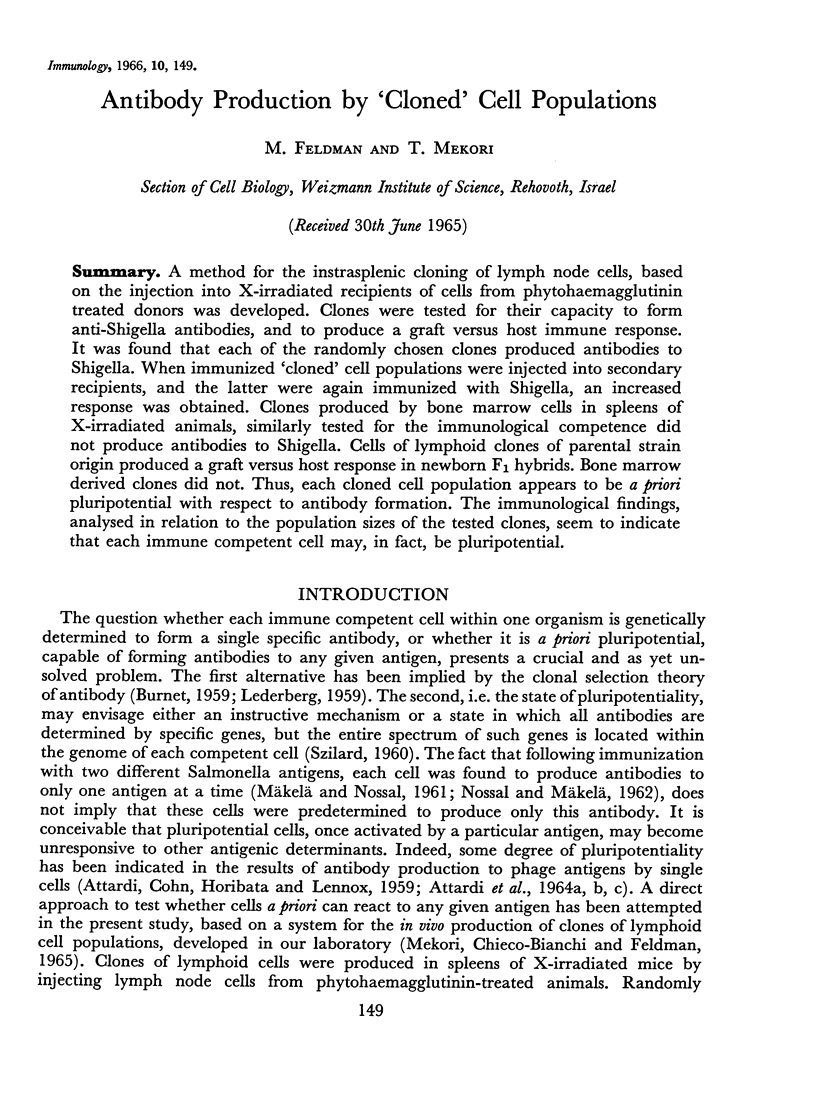

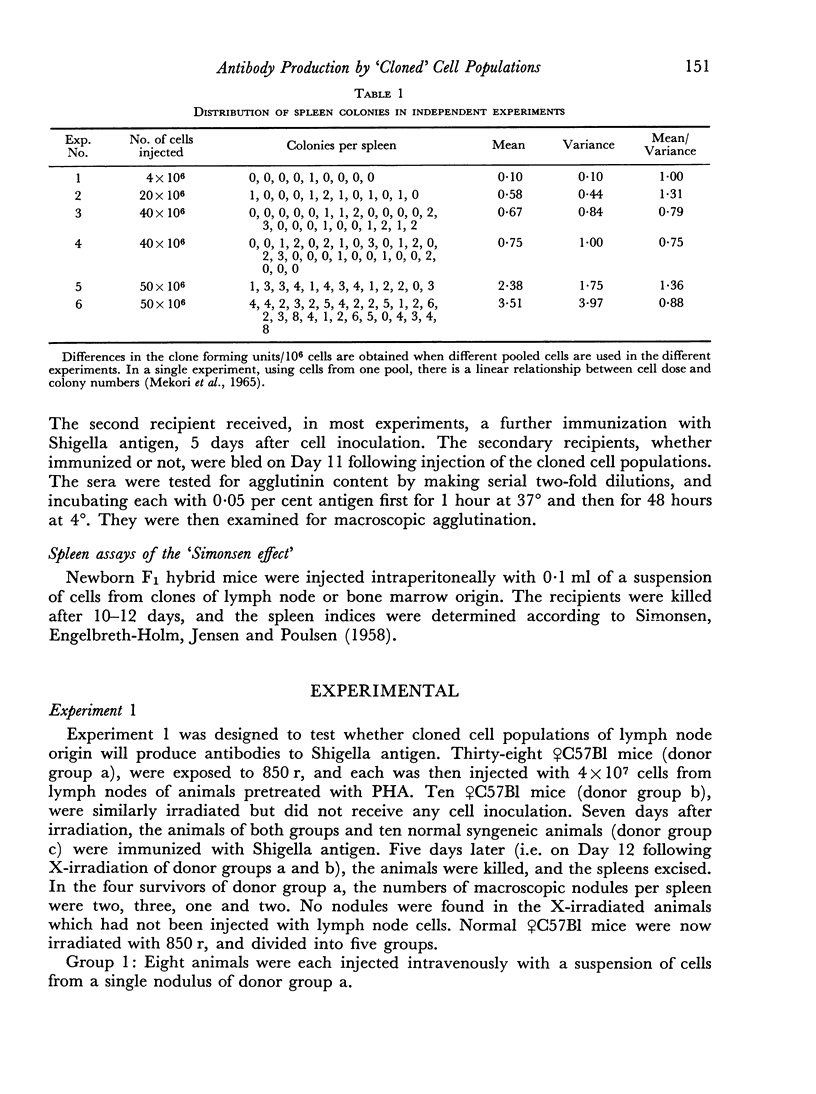
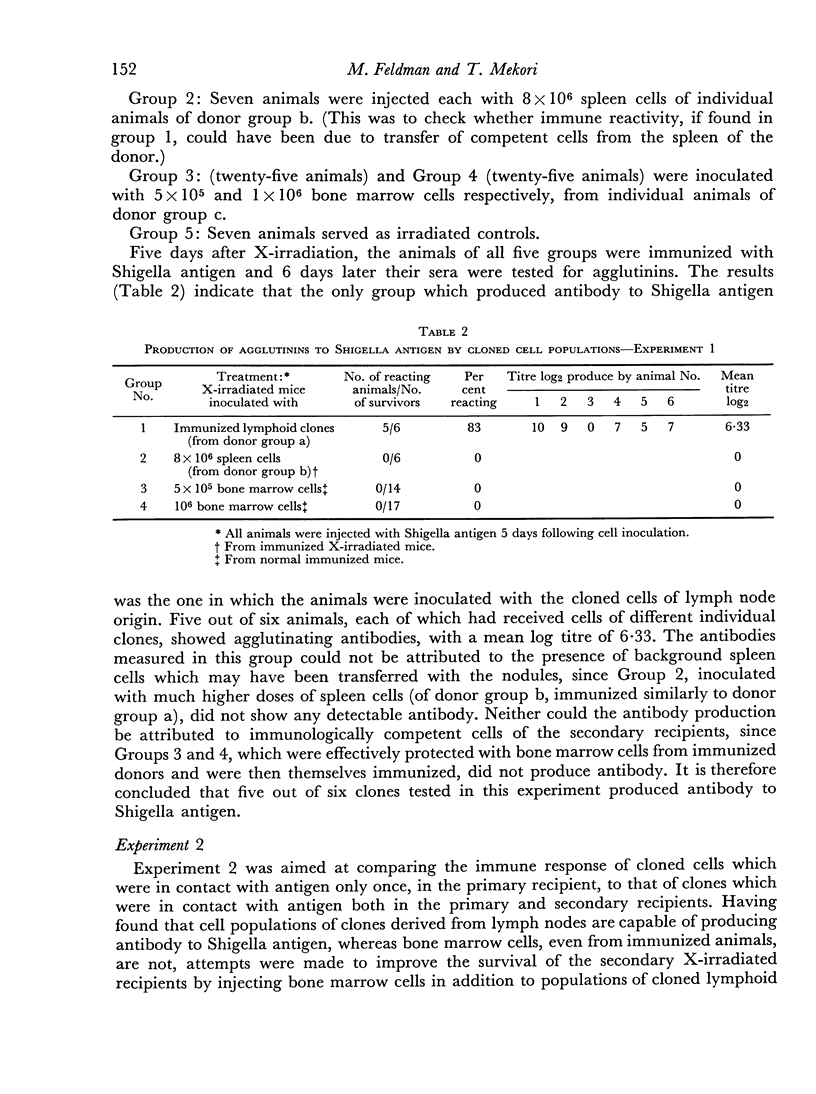
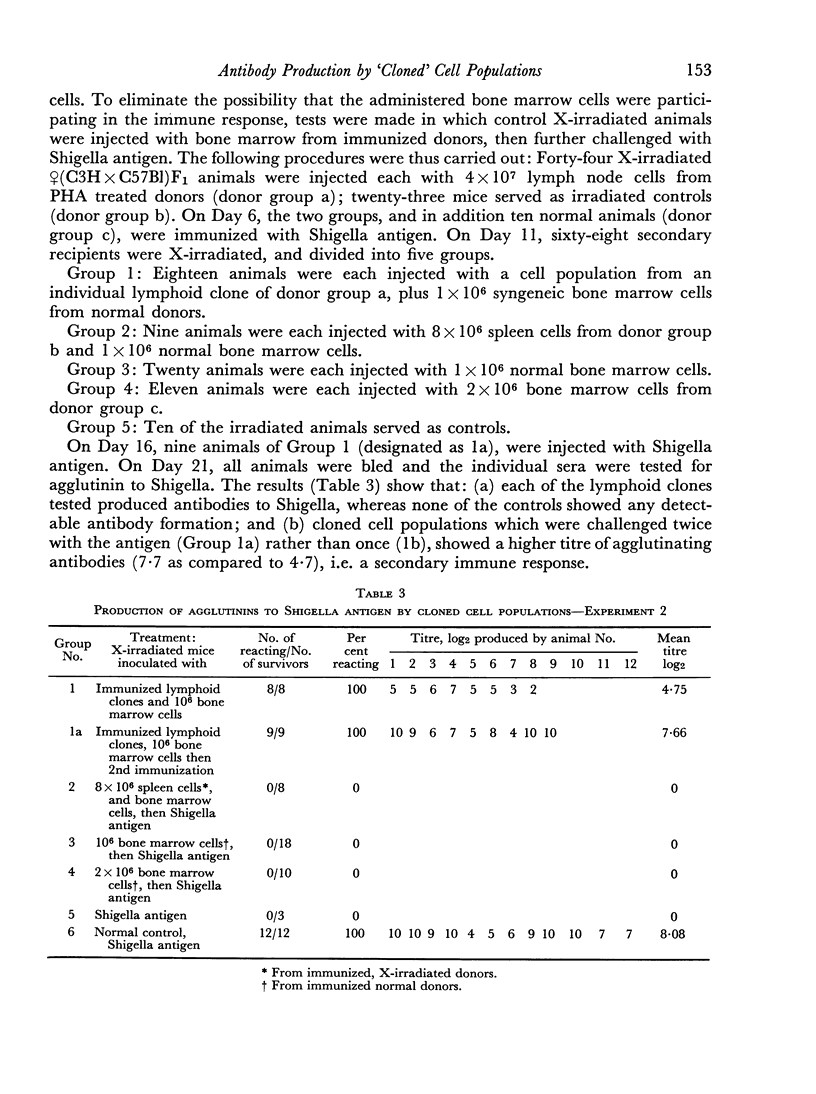

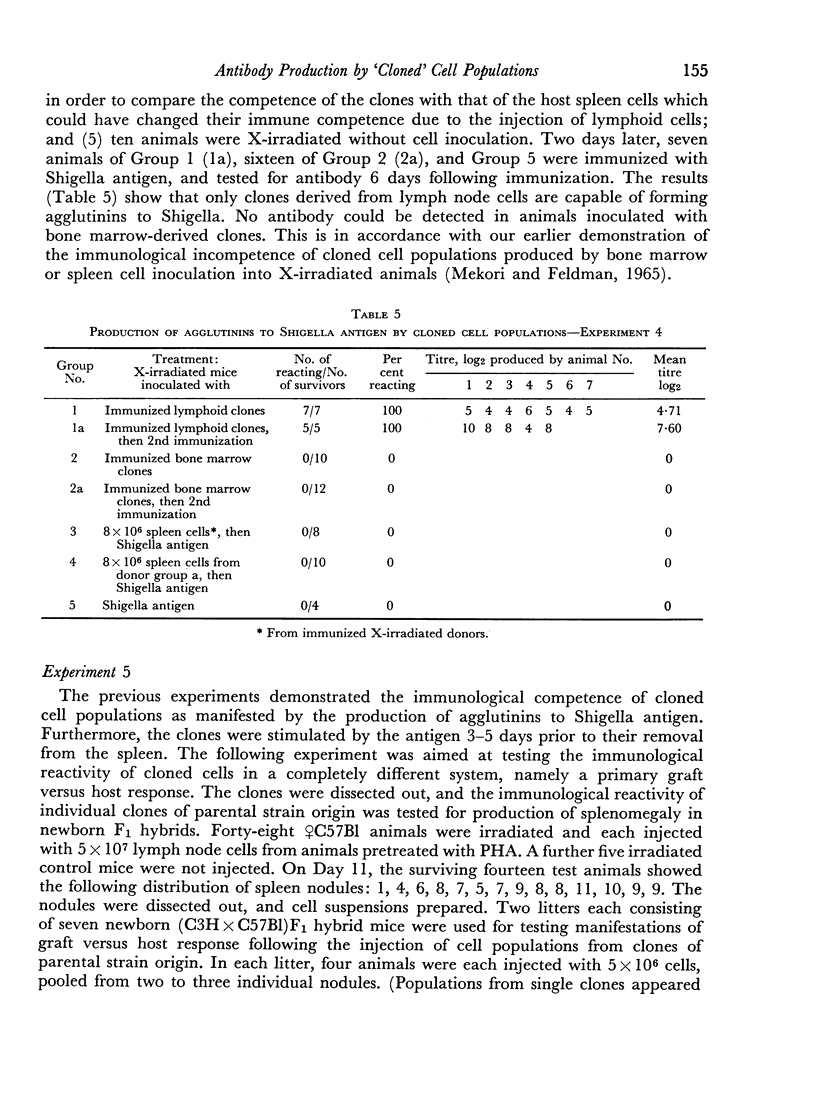


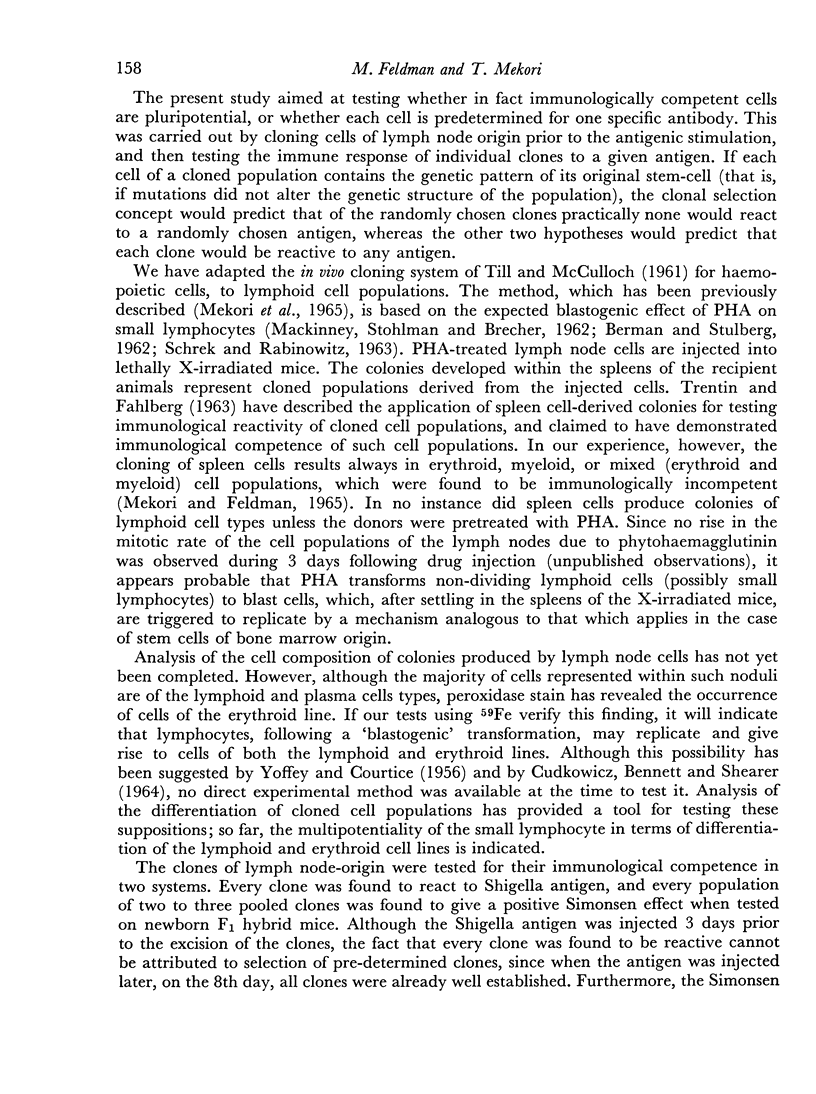
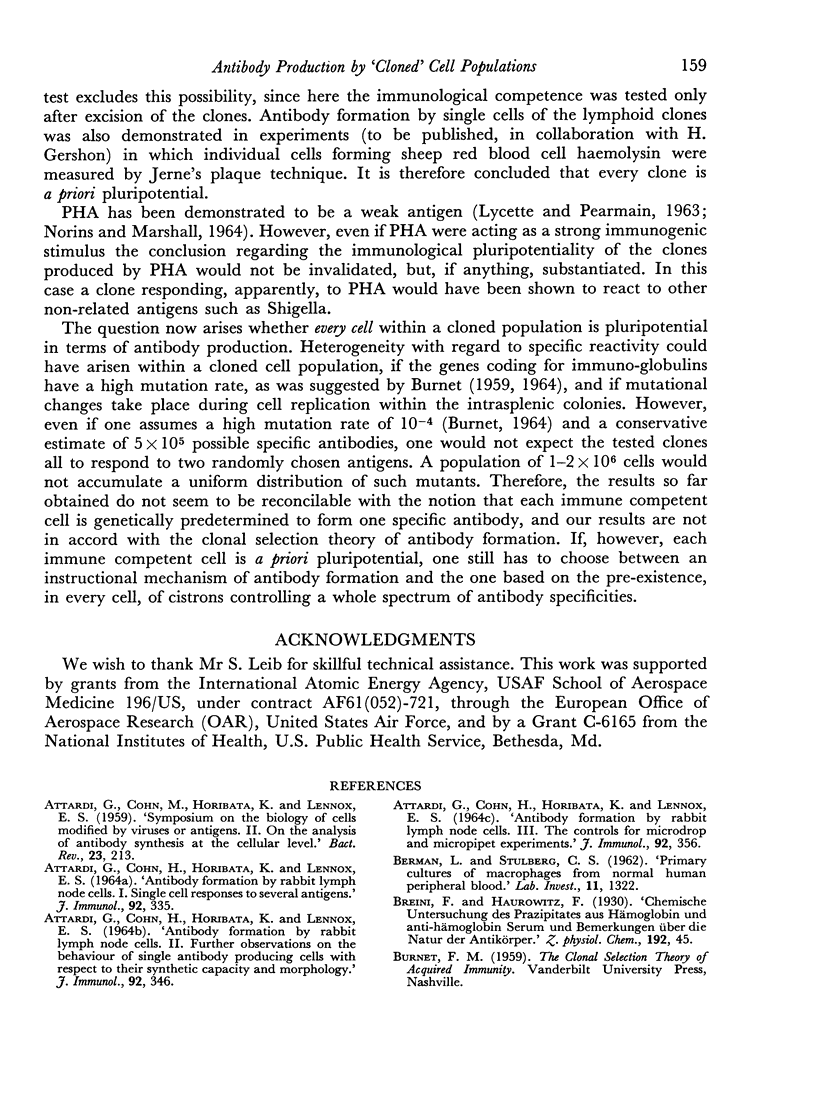

Selected References
These references are in PubMed. This may not be the complete list of references from this article.
- ATTARDI G., COHN M., HORIBATA K., LENNOX E. S. ANTIBODY FORMATION BY RABBIT LYMPH NODE CELLS. I. SINGLE CELL RESPONSES TO SEVERAL ANTIGENS. J Immunol. 1964 Mar;92:335–345. [PubMed] [Google Scholar]
- ATTARDI G., COHN M., HORIBATA K., LENNOX E. S. ANTIBODY FORMATION BY RABBIT LYMPH NODE CELLS. II. FURTHER OBSERVATIONS ON THE BEHAVIOR OF SINGLE ANTIBODY-PRODUCING CELLS WITH RESPECT TO THEIR SYNTHETIC CAPACITY AND MORPHOLOGY. J Immunol. 1964 Mar;92:346–355. [PubMed] [Google Scholar]
- ATTARDI G., COHN M., HORIBATA K., LENNOX E. S. ANTIBODY FORMATION BY RABBIT LYMPH NODE CELLS.III. THE CONTROLS FOR MICRODROP AND MICROPIPET EXPERIMENTS. J Immunol. 1964 Mar;92:356–371. [PubMed] [Google Scholar]
- ATTARDI G., COHN M., HORIBATA K., LENNOX E. S. Symposium on the biology of cells modified by viruses or antigens. II. On the analysis of antibody synthesis at the cellular level. Bacteriol Rev. 1959 Dec;23(4):213–223. doi: 10.1128/br.23.4.213-223.1959. [DOI] [PMC free article] [PubMed] [Google Scholar]
- BERMAN L., STULBERG C. S. Primary cultures of macrophages from normal human peripheral blood. Lab Invest. 1962 Dec;11:1322–1331. [PubMed] [Google Scholar]
- BURNET F. M. Cellular aspects of immunology as manifested in the Simonsen reaction. Yale J Biol Med. 1961 Dec;34:207–218. [PMC free article] [PubMed] [Google Scholar]
- BURNET M. A DARWINIAN APPROACH TO IMMUNITY. Nature. 1964 Aug 1;203:451–454. doi: 10.1038/203451a0. [DOI] [PubMed] [Google Scholar]
- CUDKOWICZ G., BENNETT M., SHEARER G. M. PLURIPOTENT STEM CELL FUNCTION OF THE MOUSE MARROW "LYMPHOCYTE". Science. 1964 May 15;144(3620):866–868. doi: 10.1126/science.144.3620.866. [DOI] [PubMed] [Google Scholar]
- HABER E. RECOVERY OF ANTIGENIC SPECIFICITY AFTER DENATURATION AND COMPLETE REDUCTION OF DISULFIDES IN A PAPAIN FRAGMENT OF ANTIBODY. Proc Natl Acad Sci U S A. 1964 Oct;52:1099–1106. doi: 10.1073/pnas.52.4.1099. [DOI] [PMC free article] [PubMed] [Google Scholar]
- HAUROWITZ F. ANTIBODY FORMATION AND THE CODING PROBLEM. Nature. 1965 Feb 27;205:847–851. doi: 10.1038/205847a0. [DOI] [PubMed] [Google Scholar]
- KARUSH F. Specificity of antibodies. Trans N Y Acad Sci. 1958 May;20(7):581–592. [PubMed] [Google Scholar]
- LEDERBERG J. Genes and antibodies. Science. 1959 Jun 19;129(3364):1649–1653. doi: 10.1126/science.129.3364.1649. [DOI] [PubMed] [Google Scholar]
- LYCETTE R. R., PEARMAIN G. E. FURTHER OBSERVATIONS ON ANTIGEN-INDUCED MITOSIS. Lancet. 1963 Aug 24;2(7304):386–386. doi: 10.1016/s0140-6736(63)93063-0. [DOI] [PubMed] [Google Scholar]
- MACKINNEY A. A., Jr, STOHLMAN F., Jr, BRECHER G. The kinetics of cell proliferation in cultures of human peripheral blood. Blood. 1962 Mar;19:349–358. [PubMed] [Google Scholar]
- MAKELA O., NOSSAL G. J. Study of antibody-producing capacity of single cells by bacterial adherence and immobilization. J Immunol. 1961 Oct;87:457–463. [PubMed] [Google Scholar]
- MEKORI T., FELDMAN M. PROTECTION OF X-IRRADIATED MICE BY "CLONED" HAEMOPOIETIC CELLS. Transplantation. 1965 Jan;3:98–113. doi: 10.1097/00007890-196501000-00012. [DOI] [PubMed] [Google Scholar]
- Mekori T., Chieco-Bianci L., Feldman M. Production of clones of lymphoid cell populations. Nature. 1965 Apr 24;206(982):367–368. doi: 10.1038/206367a0. [DOI] [PubMed] [Google Scholar]
- NOSSAL G. J., MAKELA O. Elaboration of antibodies by single cells. Annu Rev Microbiol. 1962;16:53–74. doi: 10.1146/annurev.mi.16.100162.000413. [DOI] [PubMed] [Google Scholar]
- SCHREK R., RABINOWITZ Y. Effects of phytohemagglutinin on rat and normal and leukemic human blood cells. Proc Soc Exp Biol Med. 1963 May;113:191–194. doi: 10.3181/00379727-113-28317. [DOI] [PubMed] [Google Scholar]
- SCHWEET R. S., OWEN R. D. Concepts of protein synthesis in relation to antibody formation. J Cell Physiol Suppl. 1957 Dec;50(Suppl 1):199–228. doi: 10.1002/jcp.1030500414. [DOI] [PubMed] [Google Scholar]
- SIMONSEN M., ENGELBRETH-HOLM J., JENSEN E., POULSEN H. A study of the graft-versus-host reaction in transplantation to embryos, F1 hybrids, and irradiated animals. Ann N Y Acad Sci. 1958 Oct 7;73(3):834–841. doi: 10.1111/j.1749-6632.1959.tb40863.x. [DOI] [PubMed] [Google Scholar]
- Szilard L. THE MOLECULAR BASIS OF ANTIBODY FORMATION. Proc Natl Acad Sci U S A. 1960 Mar;46(3):293–302. doi: 10.1073/pnas.46.3.293. [DOI] [PMC free article] [PubMed] [Google Scholar]
- TILL J. E., McCULLOCH E. A. A direct measurement of the radiation sensitivity of normal mouse bone marrow cells. Radiat Res. 1961 Feb;14:213–222. [PubMed] [Google Scholar]


